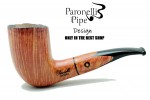- There are no more items in your cart
- Shipping Free
- Total €0.00
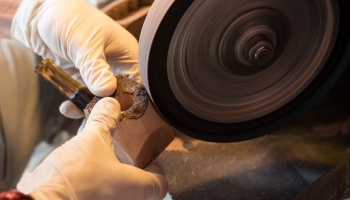
pipe made with machine or handmade pipe?
Published : 11/22/2020 14:47:21 - Categories : Pipe
We often happen to read the statements of a manufacturer or a craftsman about their products and if we were to take what we are told at "pure gold" we should conclude that almost all pipes are made by hand. Not so, let's try to go deeper into the concept.
If you think of a craftsman (who does it for a profession and not as a hobby on weekends), the first idea we have is of a pipe made entirely with rasps and lime but frankly now this is not very credible (how many times have we seen even big names show a mouthpiece worked entirely with a rasp, can you imagine it making at least 100 in a day? Let's not joke ..) while on the other hand in the "machine made" we think that as if by magic the pipe enters a machine and comes out already assembled and polished ready to smoke.
The difference between the two methods is extremely profound and now we are going to explore both.
In the mechanized process, various machines mill the various parts of the pipe. The hole in the stove is made, the upper part of the stove, the barrel is roughened and another cleans the external bottom of the stove (the so-called breech) while all the remaining operations of mounting the mouthpiece and finishing are performed by an operator. The flaw of this process? Simple, the machine cuts and does not follow the grain of the wood; something that only the eye of a skilled craftsman can do.
Furthermore, it is quite utopian that top quality materials are used, as we would have a lot of waste (due precisely to the randomness of the cut) which would make the product "uneconomical" for the manufacturing industry. Another very similar process, and which is therefore to be considered mechanized, is that using a lathe. In this case, the shape of the pipe is cut out directly on the plate it comes from
locked in the expanding mandrel and then machined by gouges while the pipe turns. This process is certainly better than the first as it allows greater control of the processing, allowing small variations in shape to adapt to small imperfections of the briar. The flaw is the almost impossibility of making particularly curved shapes.
The procedure that we consider "artisanal" is quite long and demanding but it is also the one that allows total control over the shape and grain of the briar. The stove is pierced and all the rest is worked by hand by the craftsman who approaches the plate (I am deliberately talking about a plate and not a sketch as the artisans work almost exclusively the most noble and expensive part of the Erica Arborea log while in the process mechanized are used almost exclusively sketches almost always of second choice to contain costs) to rotating discs to which sandpaper of various grits is applied.
Obviously, with this process, it takes a rather expert hand to work a pipe because it is easy not to dose the force on the discs and deform or create undulations that would compromise the final result.
On the Paronelli Pipe website (www.paronellipipe.com) in the section ABOUT US - THE PIPE you can view a video on the latter procedure just described. Through this process it is possible to make infinite shapes of pipes, always one different from the other, and to maximize the grain that mother nature has given to each single plate (not to mention the quality of the briar used and its yield in smoke, but this is another topic that we are going to deal with more specifically).
In conclusion, the line between a mechanized industrial product and a handmade artisanal product is very well marked. As always, each smoker is free to buy and smoke whatever he wants but at least just think about the fact that the artisan pipe you buy will always exist a single example, yours. Even trying to replicate it the same it will never be identical. Think people think…
Related products
Briar pipe Paronelli STYLE handmade
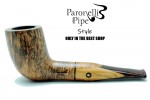
Briar pipe Paronelli STYLE handmade
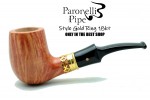
Briar pipe Paronelli STYLE handmade
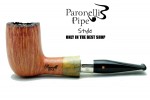
Briar pipe Paronelli DESIGN handmade
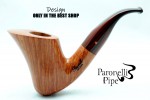
Briar pipe Paronelli DESIGN handmade
